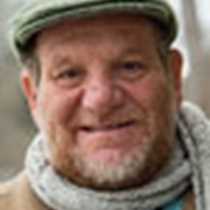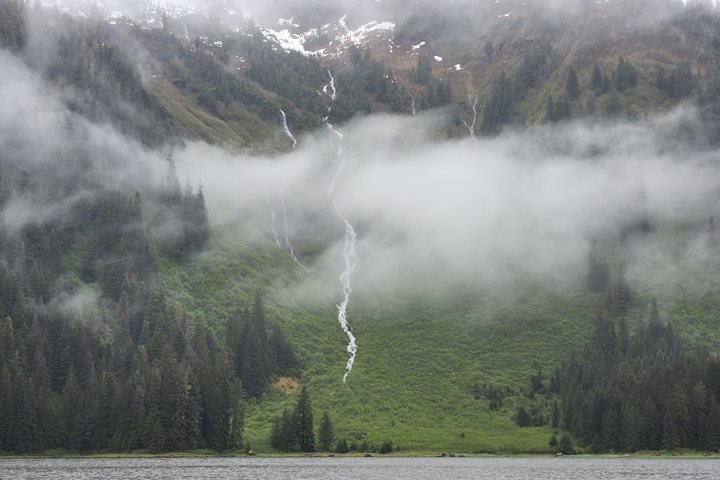“Come forth into the light of things; let nature be your teacher.” William Wordsworth
Overnight the National Geographic Sea Bird traveled 42 nautical miles through Stephens Passage, reaching Holkum Bay in the early morning. Early risers were treated to beautiful sunrise over mostly clear skies at this entrance to Tracy Arm, an exquisitely carved fjord. Our plans for the day: to explore nearby Williams Cove, and then make our way up this scenic high-cliff walled fjord to get a closer look at the Sawyer and South Sawyer Glaciers at the head.
Though morning announcement was scheduled for 7 a.m., the PA crackled at 6:23 with the hushed voice of our expedition leader: “Good morning ladies and gentlemen. It is just before 6:30, and I’m waking you up slightly earlier because we have whales outside. It’s 59 degrees with a cool glacial breeze, so bundle up with a layer or two and come join us out on the bow. Whales for our first morning—see you out there!” And thus it began, our Southeast Alaskan adventures were heralded in by a pod of “black and whites,” also known as orcas, or killer whales. This matriarchal group of cetaceans was traveling quite spread out, common for resident killer whales. Perhaps 8 or 10 were seen in various groupings, three males with their distinctive tall and pointy dorsal fins, and numerous females (and possibly juvenile males) with their smaller more curved dorsal fins. One of the males had quite a distinctive curved-hook dorsal fin, and was recognized by our captain at the helm. What a sight, to travel in the midst of these powerful creatures, peacefully breaking the surface with their “pfftt” misty outbreath, the white markings on black, then the disappearance back down again.
After breakfast, staff introductions and briefings, we went ashore at Williams Cove to test our rubber boots along the tidal flats and spongy terrain of the Southeast Alaskan temperate rain forest. A true wilderness, the trails we followed were made by bears. Breathing in the fresh scent of Sitka spruce, western hemlock, and musty earth, we tromped over branches and logs, through creeks and mud, and paused along the way to discuss the various plants, trees, and signs of wildlife encountered. A few intrepid kayakers chose to paddle the bay in lieu of walking.
All aboard again, the National Geographic Sea Bird cruised up the narrow, 2,000-foot-high cliff-walled fjord, moving through ice of various sizes, shapes, and colors. At the fork between the Sawyer and South Sawyer Glaciers, crew lowered the small inflatable expedition landing craft to the water, and we piled in to get a closer look. Treasures included spectacular waterfalls spilling down the sides of the rocky granite walls, Arctic terns soaring above, hundreds of harbor seals resting on ice floes, and the white thunder <crack!> and tremendous display of ice calving into the waters below. We reconvened in the lounge for local wine-and-chocolate tasting, and picked up a couple of rangers grateful for a hot meal and ride further down the fjord. What a great taste of Southeast Alaska for our first day!









